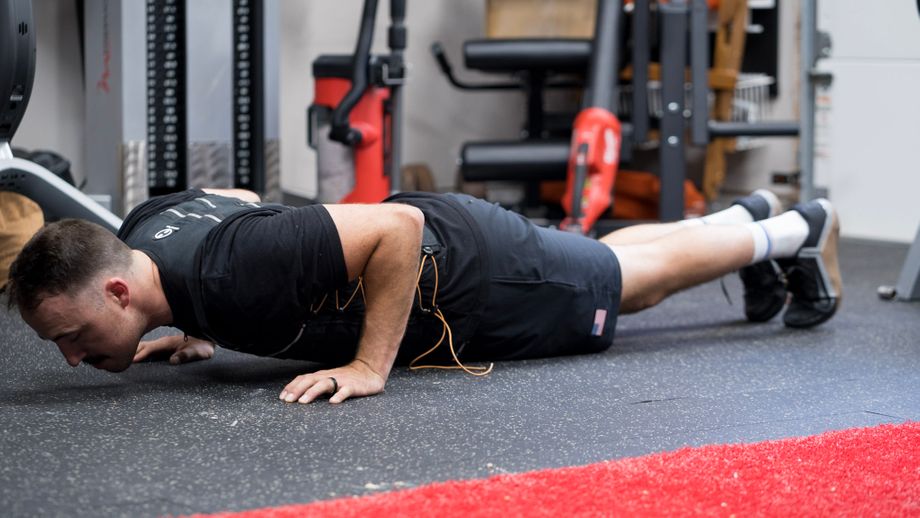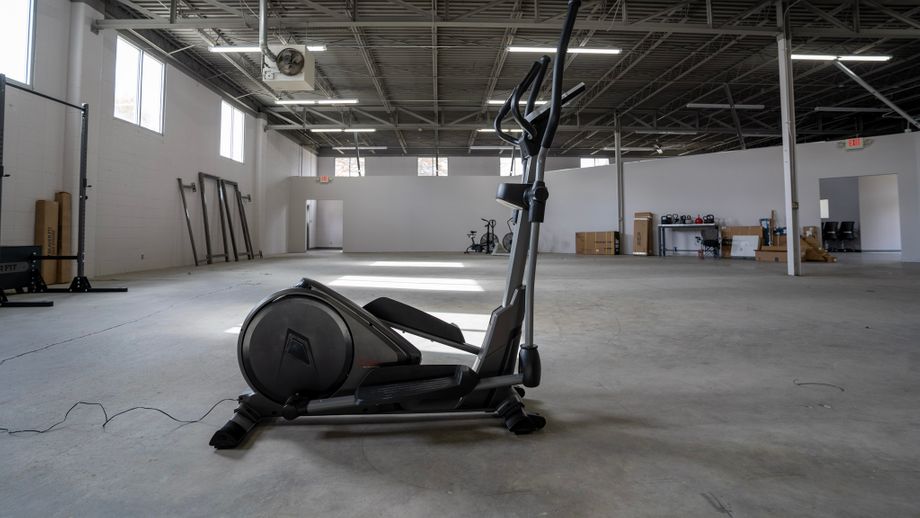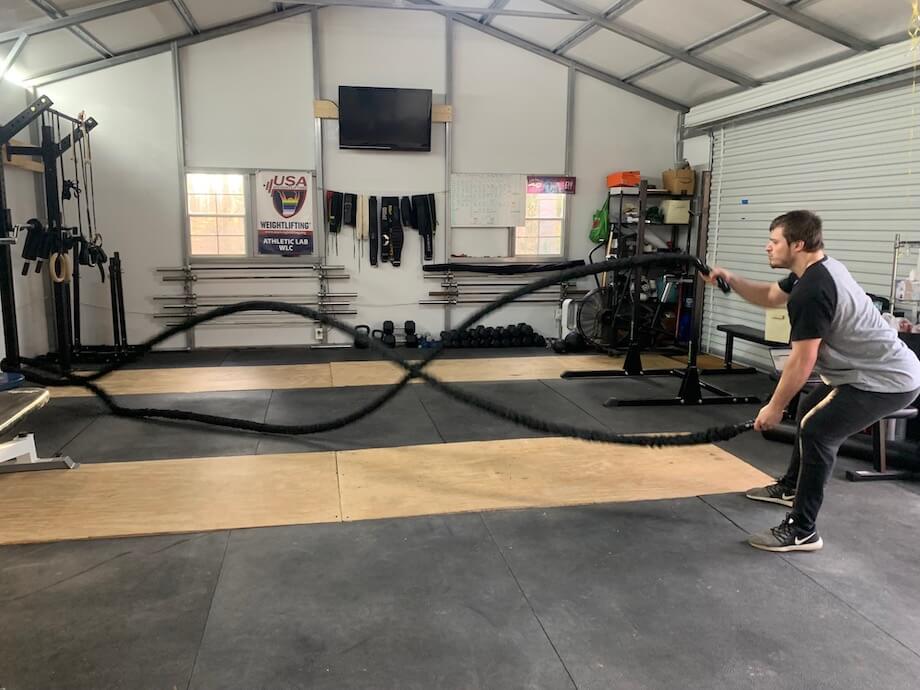When it comes to functional bodyweight exercises, the almighty push-up may very well reign supreme. Push-ups pervade training modalities of all kinds, from functional fitness to strength training programs. They’re even used as punishment in martial arts and the military.
The push-up provides excellent activation of numerous muscle groups, but where specifically are we getting the most impact? What muscles do push-ups work, really?
Today, we’re reviewing the research and dishing out the facts. We’ll cover where you receive the most muscle activation during the classic push-up and some of the most common push-up variations, and discuss the many benefits of push-ups as well.

Defining the Push-Up
Most folks are familiar with push-ups, but let’s review the basics before diving in further.
The regular push-up requires you to get on the floor and assume the plank position with your hands shoulder-width apart, fingers facing forward, and your body forming a straight line from head to heels.
Once you’re in this starting position, you have to lower your body by bending your elbows until your chest touches the floor or comes close to it. No half reps here; you want the full range of motion to really get the full muscle activation!
From there, you push yourself back up, hence the name, and return to the starting position for your next repetition. While the above refers to your regular push-ups, you can increase the challenge or change where you receive the most activation by changing the positions of your hands or feet, adding resistance, changing the tempo of the exercise, or altering the angle at which the exercise is performed, as is the case for incline and decline push-ups.
Push-Ups: Muscles Worked
We consider the push-up to be an upper body exercise, but that’s not the whole story. Let’s explore further and discuss all the muscle groups that receive activation from the simple but mighty push-up.
Primary Movers
Push-ups target various muscle groups, but there are only a few prime movers responsible for generating most of the force required to complete the exercise.
- Pectoralis major and minor: Your chest muscles play the biggest role during the push-up movement, specifically when generating the force required to push you back up to the starting position from the floor.
- Deltoids: Your anterior, lateral, and posterior deltoids contribute to stabilizing the shoulder joint and assisting the pectoral muscles in pushing your body up from the floor. All three deltoid heads work during the movement, but you’ll get the most activation in the anterior deltoids due to their placement on the front of the shoulder joint.
- Triceps brachii: Your triceps brachii are located on the back of your upper arms, and are responsible for extending the elbow during the push-up movement.
Of the prime movers, which muscles receive the most activation?
A 2021 study published by the Journal of Physics1 used electromyography “to compare the muscle activation during traditional, diamond and knuckle push up among trained men.” The results showed that “the muscle activation of pectoralis major and anterior deltoid were highest during traditional push up,” while “the muscle activation of triceps brachii was highest during diamond push up.”
For the standard push-up, you will receive the most activation in the pectoral muscles and deltoids with a lesser effect on the triceps.

Secondary Movers
So, you’re mostly hitting the chest, shoulders, and triceps in this upper body beast of a movement, but the push-up also employs a number of secondary movers.
- Biceps brachii: You’ll mostly rely on your triceps muscles to complete the movement, but the biceps, due to their location on the front of the upper arm, work to stabilize the humerus and assist the triceps in elbow flexion during the push-up movement.
- Serratus anterior: The serratus anterior sits assists in stabilizing the shoulder blade during the push-up movement. A 2022 study completed by The British Elbow & Shoulder Society2 observed “high [serratus anterior] activity during the standard [push-up]…presumed to facilitate scapular stabilization, allowing for dynamic control of the glenohumeral joint.”
- Trapezius: That same study observed the serratus anterior working in tandem with the nearby trapezius muscles “to assist with scapular positioning and movement.” These findings illustrate a role of the serratus anterior, along with the trapezius muscles in your upper back, in stabilizing the scapula during the push-up movement.
- Latissimus dorsi: Your lats stretch from the sides of your upper back all the way down to your trunk. They too assist in stabilizing the shoulders during the exercise, but support your trunk and lower body as well.
- Rectus abdominis: There’s a reason personal trainers recommend the pushup position as a modified version of the plank; it hits your abdominal muscles like the rectus abdominis. The rectus abdominis are what we commonly call the “six pack” muscles, and they stabilize the body during the push-up and help you maintain proper form.
- Glutes: Pay attention and you’re bound to feel the burn in your butt when you’re doing a push-up. The glutes help keep your hips steady and maintain proper alignment when you’re banging out the reps.
Tertiary Movers or Supporting Muscles
As a compound exercise, the push-up targets multiple muscle groups to get the job done, including some smaller, tertiary movers that assist in supporting the movement and helping you maintain proper form during the movement.
- Teres major and minor: The teres major and minor sit on the back of the shoulders, helping to stabilize the shoulder joint to a much lesser degree when compared with other shoulder muscles like the deltoids.
- Rotator cuff muscles: The small muscles located around the shoulder joint also help provide support to the shoulder and reduce your risk of injury during a set of push-ups.
- Erector spinae: Located along the spine, the erector spinae help to stabilize the back muscles and help you maintain proper alignment during the push-up movement.
- Quadriceps and hamstrings: Get into the pushup position right now and hold it. Do you feel that in your legs? Even though the push-up mostly hits your upper body, the muscles in the front and back of your thighs, the quadriceps and hamstrings respectively, work to stabilize your body and keep you in proper alignment. Your quads will help keep the knees supported, while the hamstrings work to steady your hips.
While these aren’t the prime movers, or secondary for that matter, you’ll still get some activation in these areas, and they are crucial for helping you maintain proper form and alignment throughout the movement.
Benefits of Push-Ups

As one of the most popular bodyweight exercises available, there are many benefits associated with push-ups.
Increased Strength and Size
Push-ups are widely used in various training modalities, as they can be effective for increasing upper body strength and size. In fact, a 2017 study published in the Journal of Exercise Science and Fitness3 found that “push-up exercise with similar load to 40% 1RM bench press is comparably effective for muscle hypertrophy and strength gain over an 8-week training period.”
A 2018 trial published in the Journal of Strength and Conditioning Research4 supported these findings as well. Researchers observed two groups of “moderately trained men” in order “to determine whether progressive calisthenic push-up training is comparable with traditional bench press training as a technique for increasing muscle strength and thickness.”
The results of this trial showed “significant increases in [1RM bench press] and [push-up progression] for both groups after training,” concluding that “calisthenics, using different progressive variations to maintain strength training programming variables, can improve upper-body muscle strength.”
Heart Health and Weight Loss
Push-ups are also good for your cardiovascular health. A 2019 study published in JAMA Network Open5 found “significant negative associations…between increasing push-up capacity and [cardiovascular disease] events. Participants able to complete more than 40 push-ups were associated with a significantly lower risk of incident [cardiovascular disease] event risk compared with those completing fewer than 10 push-ups.”
Push-ups, when incorporated into a comprehensive exercise regimen and supplemented with proper nutrition, should help promote weight loss as well. Harvard Health Publishing6, in a 2021 article, approximated that a 155-pound person could burn between 162 and 306 calories during thirty minutes of calisthenic exercise, depending on the intensity and specific exercises performed.
These findings illustrate that the calorie-burning potential of a comprehensive calisthenic fitness regimen could help an individual lose weight.
General Fitness Benefits
Performing push-ups not only helps encourage strength gain and hypertrophy, but muscular endurance and overall fitness as well. These effects translate directly into improved sport performance and greater ease in completing daily living activities.
RELATED: What Is Functional Fitness? A Comprehensive Guide
Convenience and Versatility
Since they require no equipment, push-ups are very convenient, allowing you to get a great upper body workout whether you’re at home, on the go, or literally anywhere there’s a floor.
They’re super versatile as well. There are many types of push-ups made possible simply by changing the positions of your hands or feet, adding resistance, changing the tempo of the exercise, or adjusting the angle of your body during the movement.
Who Should Do Push-Ups?
Most people will benefit from doing push-ups, including everyday fitness enthusiasts, athletes, and military personnel.
People who prefer working out from home but who haven’t committed a lot of time or resources in building a comprehensive home gym setup will love the convenience and versatility of push-ups. You literally need floor space, your lovely self, and that’s it!
Who Shouldn’t Do Push-Ups?
Push-ups are generally safe for most people, but there are some medical conditions or injuries that might preclude you from doing push-ups safely.
For example, individuals with wrist or shoulder pain might choose to pass on push-ups, as the exercise will put strain and increase your risk of injury in these key areas. Those suffering from chronic back pain, especially pain in the lower back, should exercise caution as well, choosing to avoid or modify the exercise as needed.
Certain medical conditions, including arthritis and heart disease, might require you to avoid push-ups as well. If you’re suffering from a medical condition or working through an injury, consult a doctor prior to beginning a new exercise regimen. Only they have the expertise required to tell you if push-ups are right for you and your circumstances.
Final Thoughts: What Muscles Do Push-Ups Work?
Push-ups are a compound exercise that engage multiple muscle groups in the upper and lower body, including your core muscles. Doing push-ups, therefore, provides excellent activation to the whole body.
- The prime movers of the push-up include the pectoralis major and minor, deltoids, and triceps brachii.
- The secondary movers include the biceps brachii, serratus anterior, trapezius, latissimus dorsi, rectus abdominis, and gluteus muscles.
- The tertiary movers or supporting muscles include the teres major and minor, rotator cuff muscles, erector spinae, quadriceps, and hamstrings.
Because push-ups are simple and require no equipment, fitness enthusiasts from beginners to professionals can get in a set virtually anywhere and reap the rewards associated with doing push-ups.
Most people are able to perform push-ups pain free and with minimal risk of injury, but certain circumstances may make push-ups unrealistic or unsafe for you. Always consult a doctor before beginning a new exercise regimen.
Overall, the push-up is one of the best bodyweight exercises out there, and it makes an excellent addition to workout routines of all kinds.
Q&A: What Muscles Do Push-Ups Work?
Do push-ups work the triceps or chest more?
THe Journal of Physics1 found more muscle activation of the chest and shoulders during the standard push-up, while the triceps received more activation during the diamond push-up variation. These findings suggest a wider hand placement targets the chest more, while narrower hand placements prioritize the triceps.
A well-rounded workout routine makes use of this fact and incorporates numerous types of push-ups for excellent activation everywhere.
What muscles do push-ups work the most?
The push-up predominantly targets the major muscles of your upper body, primarily the chest, shoulders, and triceps. However, you’ll get plenty of activation in your core muscles and lower body too, making the push-up an all-around excellent exercise to add to your regular routine.
How many push-ups a day should I do?
The number of push-ups to perform daily will depend on a variety of factors, including your age, weight, current fitness level, and personal fitness goals. Beginners may find it taxing to complete ten push-ups with good form, while pro athletes may feel anything less than one hundred is inadequate.
What’s more important than the quantity is the quality. You should only do push-ups so long as you can complete them with good form. As muscle fatigue sets in and you feel yourself unable to maintain proper form throughout the full range of motion, you should stop, whether it’s at six or sixty reps.
When in doubt, consult a qualified coach or personal trainer.
How many push-ups a day will build muscle?
According to the National Academy of Sports Medicine7, “high levels of volume and intensity are required” for muscular hypertrophy. They recommend using a progressive overload approach, “increasing the intensity or volume of exercise programs” over time.
Aiming to complete 3 to 6 sets of 6 to 12 reps is generally a sweet spot for encouraging hypertrophy. For more personalized advice, consult a coach or personal trainer.
Is it OK to do push-ups every day?
If your current fitness level supports it and you have no injuries or conditions that are exacerbated by push-ups, you can feasibly do push-ups every day.
However, this may not be the best or most well-rounded approach to reach your fitness goals, and you do risk overtraining the primary muscle groups involved during the push-up movement like the chest, shoulders, and triceps.
A workout routine that incorporates push-ups, other exercises, and appropriate rest periods will often work best. Consult a personal trainer to determine what the best combination will work for your purposes.
References
1. Nadzalan A, Mohamed M, Shafiee M, et al. Comparison of muscle activation between traditional, diamond and knuckle push up among trained men. J Phys: Conf Series. 2020;1874:-12016.
2. Kowalski KL, Connelly DM, Jakobi JM, Sadi J. Shoulder electromyography activity during push-up variations: a scoping review. Shoulder Elbow. 2022;14(3):326-340. doi:10.1177/17585732211019373
3. Kikuchi N, Nakazato K. Low-load bench press and push-up induce similar muscle hypertrophy and strength gain. J Exerc Sci Fit. 2017;15(1):37-42. doi:10.1016/j.jesf.2017.06.003
4. Kotarsky CJ, Christensen BK, Miller JS, Hackney KJ. Effect of Progressive Calisthenic Push-up Training on Muscle Strength and Thickness. J Strength Cond Res. 2018;32(3):651-659. doi:10.1519/JSC.0000000000002345
5. Yang J, Christophi CA, Farioli A, et al. Association Between Push-up Exercise Capacity and Future Cardiovascular Events Among Active Adult Men. JAMA Netw Open. 2019;2(2):e188341. Published 2019 Feb 1. doi:10.1001/jamanetworkopen.2018.8341
6. Harvard Medical School. Calories burned in 30 minutes of leisure and routine activities. Harvard Health Publishing. (2021, March 8).
7. Mahaffey, K. (n.d.). How to build muscle with push-ups: NASM Guide to pushups [part 4]. NASM.







